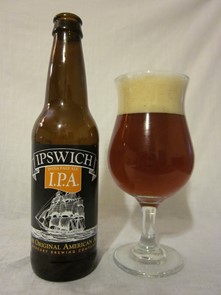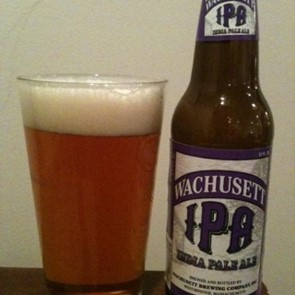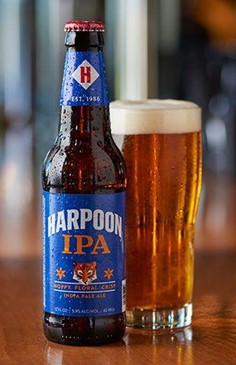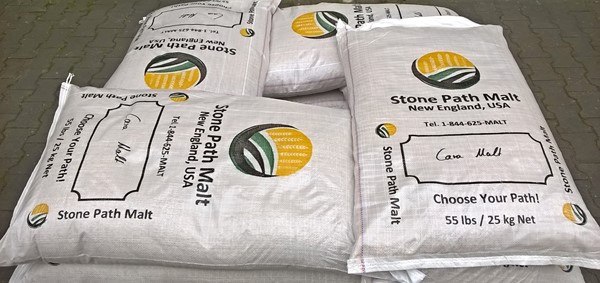The US of IPA is a project where I will brew four regionally inspired American IPAs. I will be pouring all four at the North Shore Brewers tent New England Homebrewers Jamboree. Jamboree is an event open to the public to benefit Make a Wish. Tickets are available here.
At a recent North Shore Brewers meeting, I was discussing with a fellow club member named John how the Ipswich Ale Brewery has changed many of their seasonal beers over the last few years. Although I enjoy their new products, I do miss the old Winter Ale and Harvest Ale. Ipswich isn’t alone among New England breweries to change their lineup. The English-influenced IPAs that the East Coast, or at least New England used to be known for are losing shelf space, tap lines, and the consciousness of beer drinkers to hazy New England IPAs, and more assertive West Coast IPAs.
To that point, John said that his favorite IPA was Gentile IPA. Per Gentile’s website: “Light caramel malts add a touch of sweetness to the bitterness provided by American and English hops, providing the way for a balanced beer that is great to pair with food. No palate fatigue here.” He said that he enjoyed Gentile IPA because it reminded him of what East Coast IPA used to taste like and represent.
As much as I love hop bombs, I don’t want to live in a world where a more balanced IPA is considered old-fashioned or obsolete. There should be a place for both. What I wanted to accomplish with this beer is to make something that is an homage to the legacy of New England brewing. In the beginning our craft beer had a particularly strong English influence. Many of the first IPAs made in New England featured English base malts and yeast, complemented with caramel malts and for flavor and body. Local examples of a traditional East Coast-style IPA beyond Gentile IPA are Ipswich India Pale Ale, Berkshire Brewing Company Lost Sailor IPA, and Wachusett IPA (Purple Can). Balanced and restrained, these are beers that become more drinkable with each sip. When we were in Philadelphia we closed the hotel bar and each Yards IPA tasted better than the last.



Harpoon IPA also needs to be mentioned as one of the first IPAs brewed on the East Coast. It isn’t as dark in color or as English-inspired as some of the other IPAs I mentioned. It still exhibits a similar malt/hop balance to be comfortably considered a traditional East Coast IPA.

Outside of New England, as you go south, IPAs generally aren’t quite as English-inspired in the sense that they don’t necessarily use English hops and yeasts, but they do have more malt flavor than most IPAs from the West Coast. However, as I formulated my East Coast IPA recipe I wanted to pay homage to the English-inspired IPAs that used to be synonymous with New England beer. I started my recipe with Jamil Zainasheff’s English IPA recipe from Brewing Classic Styles. I drew further inspiration from Ipswich IPA, Wachusett’s IPAs, and several other beers as I formulated my recipe.
One of my parameters for the project was that each beer would use completely different hops. This beer really should have Cascade hops, but I am already using it in Broken Fist. I made it a point to use two seminal American hops that aren’t commonly associated with IPAs: Willamette and Mt. Hood. I read an article recently that you don’t need to use “IPA hops” like Citra, Cascade, Centennial, or Chinook to make a great IPA. Revolution Brewing proved that with their Crystal Hero IPA. I look forward to trying that for myself.
For a while in the 1990s a Ringwood yeast character was synonymous with East Coast beer. As an ode to DL Geary, Shipyard, and Federal Jack’s it felt appropriate to use it here. Given that one of my self-imposed limitations with the US of IPA project was that each beer would use a different yeast to further differentiate the beers it made even more sense.
Originally I was going to use mostly English malts as well, but then I saw that Beer & Wine Hobby started carrying Stone Path Malts made right here in New England. What could be better for an old-school New England IPA than a bit of New England terrior? Stone Path has a Pale Ale malt that is similar in color to Maris Otter. Also available is a Caramel 40 and Dark Munich malt. The grist is 99% New England malt, I did add a small amount of Light Chocolate malt for color and to dry out the finish.

I brewed the beer on the first day of a stay-cation. The brew day itself was okay. I ended up with only 2.5 gallons of wort which I topped off with some additional filtered water. Since I will be filling a three-gallon keg, I really wanted to have three gallons. I pitched a two-month old starter of Ringwood that was made for a beer I never ended up brewing. It took about 36 hours for there to be signs of fermentation. I remember Andy telling me the Geary’s clones took a bit of time. I just hope I didn’t under pitch and end up with a diacetyl bomb. My plan is to move the fermenter to a warmer location after a few days to try and prevent that from happening.
I still have two IPAs to brew that need to be ready for the second weekend of September. Time isn’t exactly on my side at this point.
Click here for the recipe.
Follow me on Twitter @JChalifour
Share what beers you are drinking with me on Untappd
View the complete searchable Would-be Brewmaster Archive here.
No comments:
Post a Comment